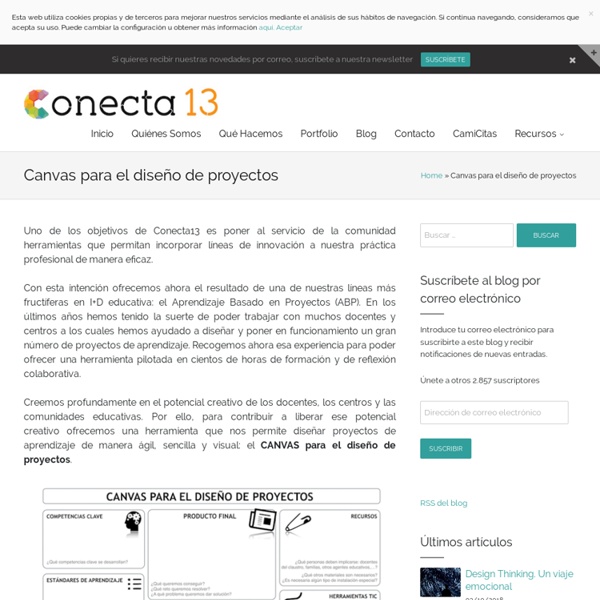How to use Google tools in Project-Based Learning
When you think about some of the key features of Project-Based Learning (PBL), what do you think of? PBL should be student-driven, with a real-world connection. It should be core to learning, include structured collaboration, and have a multifaceted assessment. Giving students a real problem to solve, getting them engaged in their work, having them work with others, and assessing their work with more than just a grade sounds a lot like how many things in the ‘real world’ work, doesn’t it?
Visual Thinking
Print Version by CFT graduate program coordinator Maria Ebner & assistant director Derek Bruff Introduction Our brains are wired to rapidly make sense of and remember visual input.
Conditions of the competition · 33rd ONCE School Competition
1. Scope of the ONCE School competition This competition is targeted at students in Primary Education (years 3, 4, 5 and 6), Secondary Education, Basic Vocational Training, Baccalaureate, Professional Training (middle and higher level) and Special Education, in all the schools in Spain. 2. Registration and materials
4 Keys To Designing A Project-Based Learning Classroom
via TeachThought Traditional American classrooms tend to fit a particular mold: Students face the front of the class where teachers lecture. Students take notes, finish assignments at home, and hope to memorize enough information just long enough to pass a test. Engagement and passion are often in short supply — among students and teachers.
Visual Thinking Strategies in the Classroom
I had heard about Visual Thinking Strategies over the years and even read a little about it but I had no first hand experience with it. After attending a VTS workshop this past summer I started to get really excited about its use in one of my schools. In reading more about it through the fall and learning about how effective it had been found to be with English Language Learners, I really started to believe it could be a great strategy for this school with a nearly 80% ELL population. When the opportunity came for some members of the staff to attend a training, I was thrilled that two of my colleagues were willing to come and learn more about it to try it out in their classrooms.
5 Tips for Flipping Your PBL Classroom
I am of course a huge project-based learning (PBL) nerd and advocate. I am also an advocate for the flipped classroom, yet at the same time I also have my concerns about flipping a classroom. This model still hinges upon great teachers, and engaging curriculum and instruction.
Flipping the Classroom
“Flipping the classroom” has become something of a buzzword in the last several years, driven in part by high profile publications in The New York Times (Fitzpatrick, 2012); The Chronicle of Higher Education (Berrett, 2012); and Science (Mazur, 2009); In essence, “flipping the classroom” means that students gain first exposure to new material outside of class, usually via reading or lecture videos, and then use class time to do the harder work of assimilating that knowledge, perhaps through problem-solving, discussion, or debates. In terms of Bloom’s revised taxonomy (2001), this means that students are doing the lower levels of cognitive work (gaining knowledge and comprehension) outside of class, and focusing on the higher forms of cognitive work (application, analysis, synthesis, and/or evaluation) in class, where they have the support of their peers and instructor. What is it? | Does it work? | Theoretical basis | Key Elements | Where can I learn more? | References
The Teacher's Guide To Flipped Classrooms
Since Jonathan Bergman and Aaron Sams first experimented with the idea in their Colorado classrooms in 2004, flipped learning has exploded onto the larger educational scene. It’s been one of the hottest topics in education for several years running and doesn’t seem to be losing steam. Basically, it all started when Bergman and Sams first came across a technology that makes it easy to record videos. They had a lot of students that regularly missed class and saw an opportunity to make sure that missing class didn’t mean missing out on the lessons.


